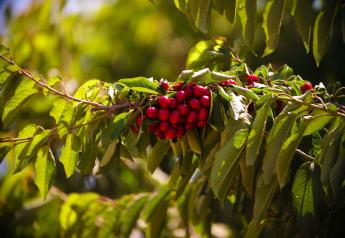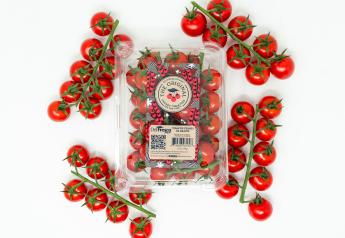Florida citrus growers face uphill climb after Irma
Florida citrus growers face uphill climb after Irma
About two weeks after Hurricane Irma ripped through Southwest Florida, several citrus growers took The Packer through groves that were ravaged by the storm and described the challenges they now face and how they move forward.
LABELLE, Fla. — Citrus growers in Southwest Florida estimated they have lost 60-70% of their fruit to Hurricane Irma. Some groves lost significant numbers of trees as well.
Lee Jones, general manager for Gardinier Florida Citrus, looked up the name Irma out of curiosity after the hurricane tore through the area.
“The name Irma means complete, and she lived up to her name,” Jones said. “This is complete destruction here. Total disaster here.”
One Gardinier grove was likely among the hardest-hit in the industry, with 70% of its trees ripped out of the ground, the roots completely exposed.
Previously the most productive in the company, Julian Grove is likely a total loss, Jones said.
Before Irma, Gardinier had expected the crop to be up 30%. It has groves in LaBelle, Immokalee, Lake Wales and Frostproof.
The tree loss in three of the four was minimal, but the fruit loss is still extensive, as is the case for many in the industry.
Jones expects further contraction of Florida citrus — already beaten down in the past decade by citrus greening disease — if no help comes.
“How are we going to survive this? If the feds don’t step in with some disaster assistance, we’re toast,” Jones said. “And a lot of growers across the state, same situation.”
LaBelle-based Everglades Harvesting & Hauling, which like Gardinier grows for juice, also experienced significant tree loss and fruit loss.
“You could have written a horror story and it probably would have looked something like this,” said owner Paul Meador.
The company will likely lose about 75% of the fruit it was growing, and about 22,000 of its trees are be-yond saving.
Everglades Harvesting & Hauling flew a drone over its approximately 2,000 acres to estimate damage.
The timing of the storm could hardly be worse for citrus growers.
“This should have been the recovery year for the industry,” Meador said. “We’ve all been replanting heavily, we’ve got some new tools, bactericides, got some nutrient combinations that are really showing a lot of promise ...
“Last year we had a really bad crop, so we really needed a good one this year,” Meador said. “We got just the opposite.”
As did others in the industry, Meador noted that insurance will not make up the gap between what growers should have made and what they will now make, not to mention the cleanup costs they will incur to get back to normal operation.
“It’s not soybeans and corn where if they have a bad year the compensation almost is equal to the revenue they may have generated,” Meador said. “In our business, a couple good years make up for the prior bad 10 years, so (insurance), it never makes you whole again.”
Martin Mason, owner of Tropical Oaks Farm, LaBelle, said the trees hit the hardest for his operation were 5-year-old Sugar Belles just coming into production.
Sugar Belle, a fresh-market crop, was developed by the University of Florida to be more tolerant of citrus greening.
“Last year we had a tickle of a crop, just a tease, and this year we had probably 200-300 boxes per acre, which is good for Sugar Belle, really great,” Mason said. “Then all of a sudden — wham.”
Much fruit was ripped off the trees by the winds of the storm. As is the case elsewhere, fruit continues to drop because of the trauma to the trees.
In Mason’s grove, some trees also had branches break off, and some trees were split almost down the middle.
The ones that can be saved — smaller trees that have not been entirely turned over — will need to be lifted up, supported with a special brace, then pruned so the tree is balanced, Mason said. Additional insect, disease and weed control also have to happen soon.
Eventually, when it comes time to harvest, labor may be a challenge since the lack of fruit means less earning potential for workers.
Mason is ready to tackle the task, overwhelming as it is.
“It’s going to be never-ending,” Mason said. “But we’re going to do it. I’m not going to give it up. Even at 75, I’m going to fight.”
The others were doing likewise, planning to run multiple front-end loaders for weeks to clear out the ruined trees.
Growers expect the damage of the storm to linger, delivering more punishment next season.
“The trees are extremely stressed,” Meador said. “You get what’s left of this crop off, and then next year we’ll probably have half a crop again ... It’s the ugly gift that keeps on giving.”







